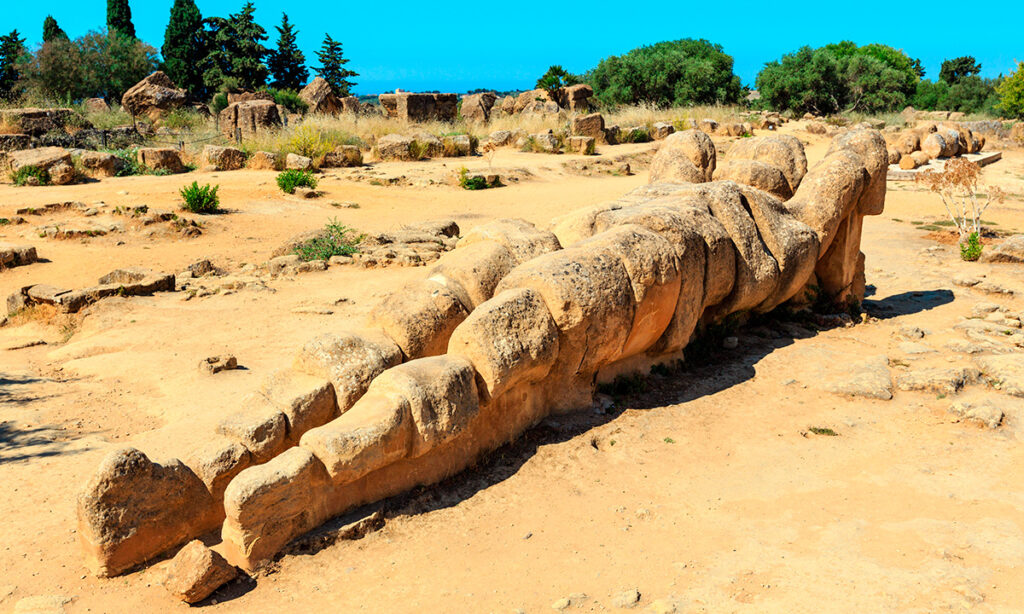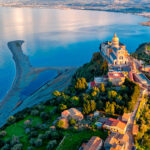Hospitality and mobility at the center of the project that led to the city’s candidacy
Agrigento will be the Capital of Culture 2025. The city presented the project entitled “The self, the other and nature. Relations and cultural transformations”, beating the competition of the other 14 cities competing for the competition of the Ministry of Culture. The project, in which, in addition to the city, Lampedusa and the municipalities of the territory are present, explores the harmony and conflicts between the 4 elements of Empedocles (Greek philosopher of the fifth century BC) through 44 projects, 17 of which are international, to investigate the relationships between human beings in a perspective of peace with nature.
That Agrigento has become the Capital of Culture is not surprising at all: few cities in Italy and in the world have such a rich history, which starts from Magna Graecia and arrives to the present day.
Founded in 580 BC by the Greeks with the name of Akragas, Agrigento, also known as the City of Temples, is today a popular tourist destination, famous all over the world for the Valley of the Temples, UNESCO heritage since 1997.
With its 1300 hectares of extension, the Valley of the Temples is the largest archaeological site in the world and also one of the best preserved, with its twelve Doric style temples, three sanctuaries, necropopolis, the lower and upper Agora, an Olympeion (temple of Zeus), a Bouleuterion (building that housed the typical council of the Greek polis), a recently discovered Greek theater and the telamons (sculptures over seven meters long).
The Temple of Concord is considered, together with the Parthenon in Athens, the best preserved Doric temple in the world. It is not known to which deity it was dedicated while the name was found among the documents of 1500 of the Dominican friar Tommaso Fazello, one of the first Sicilian historians. The Temple of Juno is the one that opens the visit to the Valley of the Temples: built around the fifth century BC, it still has 30 columns standing, 16 of which have capitals. The Temple of Heracles is the most archaic of the temples of Agrigento while the Temple of Zeus Olympus remains only the base due to the earthquake of 1401 that made it collapse completely. The remains of the Temple of Demeter, an interesting example of a distil building in antis, that is, without external colonnade, were incorporated by the church of San Biagio in medieval times. Of Roman times is instead the Tomb of Theron, funerary monument that is part of the Roman Necropolis also called Necropolis Giambertoni.
The Valley of the Temples is the Disneyland of history lovers, the Wonderland of every antiquity and art enthusiast: walking the sacred streets that unite the remains of Greek buildings has the power to catapult tourists into a parallel dimension, into a bygone era. You can breathe the Storia (with a capital “s”) at the top of your lungs.
The archaeological museum, obviously, is full of elements from the Valley of the Temples, including The Telamon of the Olympeion (telamons are sculptures used as supports instead of columns) reconstructed in the back wall of Room VI, coming from the Temple of Zeus, of which there is also a model that describes how it must have been at the time of its maximum splendor.

But Agrigento has much more to offer than the Valley of the Temples, starting from its historic center. If the Cathedral of San Gerlando is a combination of several styles, from Norman to Gothic, up to Renaissance and Baroque, it is the latter that dominates the city center. In Baroque style is the facade of the Basilica of the Immaculate as well as the decorations inside the Sanctuary of San Calogero.
The Basilica of Santa Maria dei Greci deserves a special mention: built on the remains of a Doric temple, thanks to the glass floor it is possible to look at the foundations of the temple. Another example of a mix of ancient divinities and Catholicism as already seen in the Temple of Demeter and as can be found in other Sicilian cities.
In Agrigento, as in all of Sicily, there are unique typical dishes, especially desserts: from crunchy almonds or pistachio to sweet couscous, there is no shortage of specialties that will conquer your palate.
Agrigento is also the birthplace of one of the greatest Italian writers: Luigi Pirandello, Nobel Prize for Literature in 1934. In Porto Empedocle, once a hamlet of Agrigento, today a municipality in itself, you can visit the artist’s house. One of the most popular writers of recent decades was born in the same country: Andrea Camilleri.
For lovers of nature and the sea there is the beach of San Leone, which is located very close to the Valley of the Temples. In February then, you can enjoy the view of the flowering almond trees. An event celebrated with the Almond Blossom Festival, which is joined by the International Folklore Festival, a moment of union and brotherhood among peoples. Union and brotherhood among peoples that was also among the reasons for the choice of the jury for the assignment of the title of Capital of Culture 2025: “Agrigento takes the relationship between the individual, others and nature as the center of its candidacy dossier, involving the island of Lampedusa and the municipalities of the province and placing the theme of hospitality and mobility as its fulcrum. The project responds in an organic way to the objective of presenting to a wide audience a program of great interest at a territorial level, but also nationally and internationally”.
City among the greatest exponents of Magna Graecia, home of great writers, crossroads of many peoples and emblem of culture and brotherhood: in the fifth century BC. the poet Pindar had called Akragas “the most beautiful of the cities of mortals”… and from what we can still see today we have no doubt that it was so.





Comments are closed.